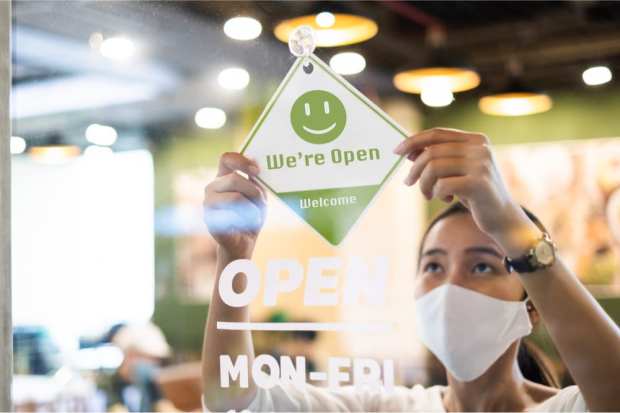Reinventing Retail: The Laws Of Attraction

It used to be that controllable and somewhat predictable factors like price, selection and location defined retail success. More recently it was data-driven decisioning and location-based services that could bring a competitive advantage. In the post-pandemic world, the rules have changed. The factors that will drive the digital shift and possibly bring consumers back to brick-and-mortar retail look more like empathetic marketing and shopper safety. But as the “great resettling” gets underway, one factor keeps presenting itself, and it comes under the heading of differentiation.
Retailers, as well as major brands, have made the mistake of taking a generic view of the world. Instead of looking at Class A vs. Class C malls, analysts predict the success or failure of generic malls. Instead of considering the consumers who will be attracted to high-ticket fashion, retailers slash prices for everyone. This trend toward a generic worldview and away from the specificity that has driven retail in better times could be a major factor in the various ways that retail emerges from the biggest economic crisis in history.
“I’ll give you an analogy I used on somebody with restaurants,” says Sam Zietz, CEO of restaurant and retail technology and payments provider GRUBBRR. “I think sports bars are back. People will go back to them pretty quickly. But high-end steak houses? Well, their demographic tends to skew much older. In fact full-service restaurants … skew to an older age demographic. Now that’s a huge difference because I know consumers are looking for a vaccine before they return to their pre-crisis activity. But I’ll go further. I think we need to know that there is a cure before all population segments are comfortable. Younger consumers might be willing to take a calculated risk that they will get sick. But older consumers aren’t going to take the chance that they might be hospitalized. So I think you will see the stores that skew to a younger demographic pop back quicker. They need to do a good job of publicizing that.”
In his statement, Zietz differentiates between types of restaurants and types of consumers. By doing that, retail and restaurant marketers can sharpen messaging and communicate empathy and safety with different tones. The Capital Grille’s current website, for example, is currently featuring an elegant Mother’s Day at home. Buffalo Wild Wings is still about BOGO promotions for wings, but these will be home-delivered until the current crisis is “navigated.”
Another differentiating factor centers around various consumer psyches. The mistake would be to think that all consumers will burst out of the gate and shop until their pent-up habits are satisfied. The more productive way is to embrace the differences.
Canada’s McMaster University Professor Manish Kacker has been researching potential precedents to the pandemic. Although one does not readily present itself, he finds use in comparing the retail return to the iPhone introduction in June of 2007. Apple, he says, saw the wisdom in mixing predictable elements into a completely unprecedented product.
“It was a game changer in many ways and Apple did two things that were very smart,” he says. “One is that they had a lot of the apps and design of the product look similar to an analog product. For example, the clock face looks like what an analog clock would look like. So that is sort of a way to sort of make it seem more familiar to consumers to reduce the anxiety of giving up the old way of doing things. Secondly, if you look at the advertising, they focused a lot on showing the product and showing how intuitive it was to use.”
In a similar fashion, Kacker believes retailers will need to show shoppers that they will need to give up the old ways of shopping in order to access newer, safer ways to shop. In other words, show them the familiar to introduce the unfamiliar. Innovations will depend on guaranteeing shopper safety and protecting employees. And even as consumers shift to digital, for some that experience is itself is a new technology and process.
“And so they have no choice in terms of giving up the old ways of shopping, they have they have to shop in a different way today,” Kacker says. “And they have to learn, sort of, new ways of shopping or new ways of consuming. Some of this change will impact how quickly they transition to adopting some of the new processes, even when the old options come back and are available to them.”
McKinsey’s continuing analysis of the crisis reinforces the importance of differentiation. As Asia and now Europe start to emerge from lockdown, its EU staff has been calculating business metrics and consumer and finds very little in the way of common denominators even from country to country. Its research shows that in France, for example, 44 percent of consumers plan to cut spending over the next two weeks, compared to 34 percent in Italy, 45 percent in the United Kingdom, and 28 percent in Germany. In China 50 percent of scheduled purchases have been canceled (not delayed). Impulse purchases fell by more than 30 percent and online purchases have seen increases in penetration of 15 to 20 percent.
“It will be essential to understand the impact of the crisis on household purchasing power and the confidence of households in the economic future of both their country and their own household. These determine their propensity to consume or save,” it says. “In light of these factors, companies will need to review their traffic projections and the average customer basket. They will also need to anticipate changes in consumption habits and expectations.”
